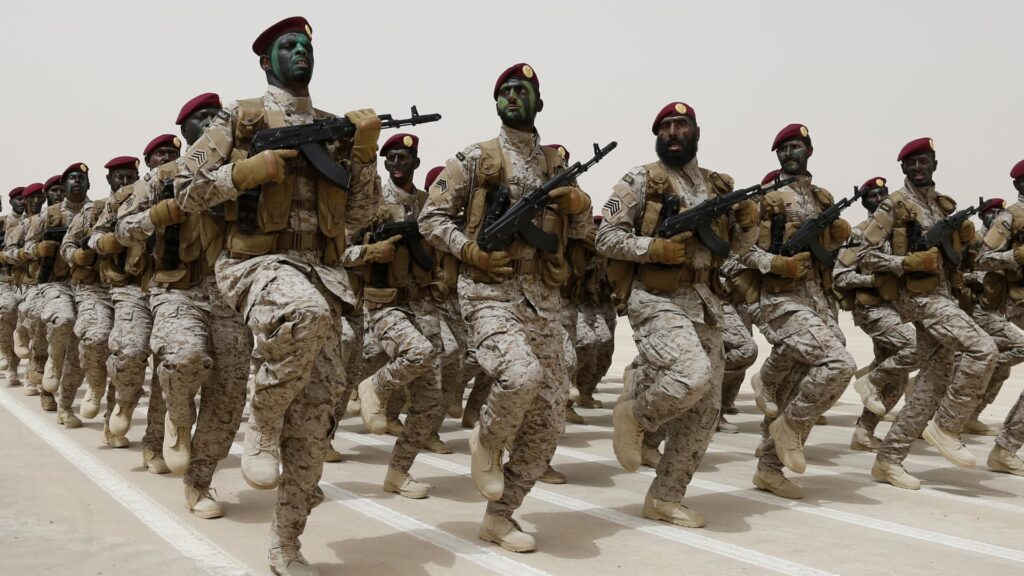Arab NATO revival is emerging as a central discussion among Arab nations as they explore the possibility of creating a NATO-style military force to strengthen regional security and collective defense. This initiative, first proposed years ago, has returned to the spotlight amid rising regional tensions and the increasing need for coordinated defense strategies.
The Arab NATO revival reflects the shared understanding that individual states may struggle to respond to threats alone. By pooling resources, expertise, and military capabilities, Arab nations aim to create a stronger, united defense mechanism that can act decisively in times of crisis.
Historical Context of the Arab NATO Revival
The idea behind the Arab NATO revival has roots in decades of discussions about Arab military cooperation. While previous efforts focused on limited collaboration, disagreements over leadership, funding, and operational control often prevented progress. The current revival seeks to overcome these historical obstacles by establishing a clear and structured alliance.

Under the Arab NATO revival framework, member states would contribute troops, technology, and logistics according to their capacity. The alliance would operate under a central command structure, ensuring coordinated responses to threats while preserving national sovereignty. This unified approach is intended to enhance both deterrence and operational effectiveness across the region.
Why the Arab NATO Revival Is Gaining Momentum
The Arab NATO revival is gaining traction due to several pressing regional factors. Increasing conflicts, territorial disputes, and external interventions have exposed vulnerabilities in individual defense strategies. Arab nations are realizing that a coordinated approach is crucial to maintaining stability and safeguarding their sovereignty.

The revival is also driven by the recognition that external powers influence regional politics. A NATO-style alliance among Arab states would strengthen self-reliance and signal to the international community that the region can organize collectively for its security.
Objectives of the Arab NATO Revival
The primary objectives of the Arab NATO revival include:
- Collective Defense: Arab states agree to defend one another against external aggression, creating a framework of mutual protection.
- Rapid Response: The alliance would maintain ready forces capable of responding quickly to crises, whether conflicts, border incursions, or emergencies.
- Strategic Coordination: Member states would share intelligence, conduct joint exercises, and develop coordinated military strategies to enhance readiness.
- Deterrence: The presence of a unified military force acts as a deterrent, discouraging potential adversaries from initiating hostilities.
- Regional Stability: By acting together, Arab nations can prevent unilateral actions and reduce the risk of conflict escalation.
Structure and Organization
The Arab NATO revival envisions a central command with representation from all participating nations. While operational decisions would be made collectively, day-to-day military operations would be coordinated by a joint council of military experts from each member state.
Resource contributions would be proportional, reflecting each nation’s capabilities. Larger states might contribute more troops and technology, while smaller states would offer strategic support, logistics, or specialized units. This ensures fairness while maintaining operational effectiveness.
Joint training exercises, intelligence-sharing mechanisms, and common communication systems would form the backbone of the alliance. Regular drills would help build trust and improve the ability to conduct coordinated operations across borders.

Challenges to the Arab NATO Revival
Despite its advantages, the Arab NATO revival faces significant hurdles:
- Political Differences: Diverse foreign policies and alliances among Arab states may complicate consensus on key decisions.
- Resource Imbalances: Differences in military capabilities could cause tensions over contributions and responsibilities.
- Sovereignty Concerns: Some nations may hesitate to commit forces to a collective command structure, fearing compromise of national authority.
- Regional Rivalries: Historical conflicts and rivalries could hinder cooperation.
- External Pressures: Global powers may view the alliance as a challenge to their influence and could attempt to interfere.
Support for the Arab NATO Revival
Several nations are actively supporting the revival, recognizing the strategic benefits of coordinated defense. Countries with strong military capacities see the alliance as a way to enhance regional security and protect shared interests. Supporters emphasize the importance of deterrence and rapid-response capabilities in an increasingly unpredictable region.
Other nations remain cautious. They may adopt a phased approach, participating initially in joint exercises and coordination activities before fully committing to operational integration. This measured approach can help build confidence and address concerns about sovereignty and resource allocation.
Potential Benefits of the Arab NATO Revival
The Arab NATO revival offers numerous advantages:
- Enhanced Defense Capabilities: A unified military alliance strengthens deterrence and improves the ability to respond to threats efficiently.
- Political Cohesion: Beyond military benefits, the alliance promotes unity, collaboration, and joint problem-solving among Arab states.
- International Credibility: The alliance demonstrates that Arab nations can self-organize for security, improving their standing in global diplomacy.
- Economic Collaboration: Shared military infrastructure and joint technology development can stimulate defense-related economic cooperation.
- Long-Term Stability: The alliance provides a framework for preventing escalation of localized conflicts, contributing to sustained regional peace.

Implementation Path for the Arab NATO Revival
Successful implementation of the Arab NATO revival requires careful planning:
- Consensus Building: Member states must agree on objectives, command structures, and membership rules.
- Resource Evaluation: Transparent assessment of military capabilities ensures balanced contributions.
- Joint Planning: Coordinated exercises and training build operational readiness.
- Legal Framework: Treaties and agreements formalize governance, rules of engagement, and dispute resolution.
- Phased Rollout: Starting with joint drills and smaller-scale operations allows the alliance to demonstrate effectiveness and build trust.
Future Prospects
The Arab NATO revival has the potential to reshape the region’s security landscape. By pooling military resources and expertise, Arab states can establish a credible deterrent against external threats, improve coordination, and enhance political cohesion.
While challenges remain, a structured, phased, and carefully negotiated approach can help the Arab NATO revival succeed, ultimately promoting stability and security across the Middle East.
Conclusion
Arab NATO revival represents a bold vision for collective defense and strategic cooperation in the Middle East. By creating a NATO-style military alliance, Arab nations can strengthen defense capabilities, deter adversaries, and ensure regional stability. Though hurdles exist, careful planning and collaboration could make the Arab NATO revival a transformative initiative for the region, demonstrating unity, resilience, and self-reliance in the face of evolving security challenges.
Do follow UAE Stories on Instagram
Read Next – Israeli Strike on Qatar: Former Turkish PM Warns No Safety in Middle East














